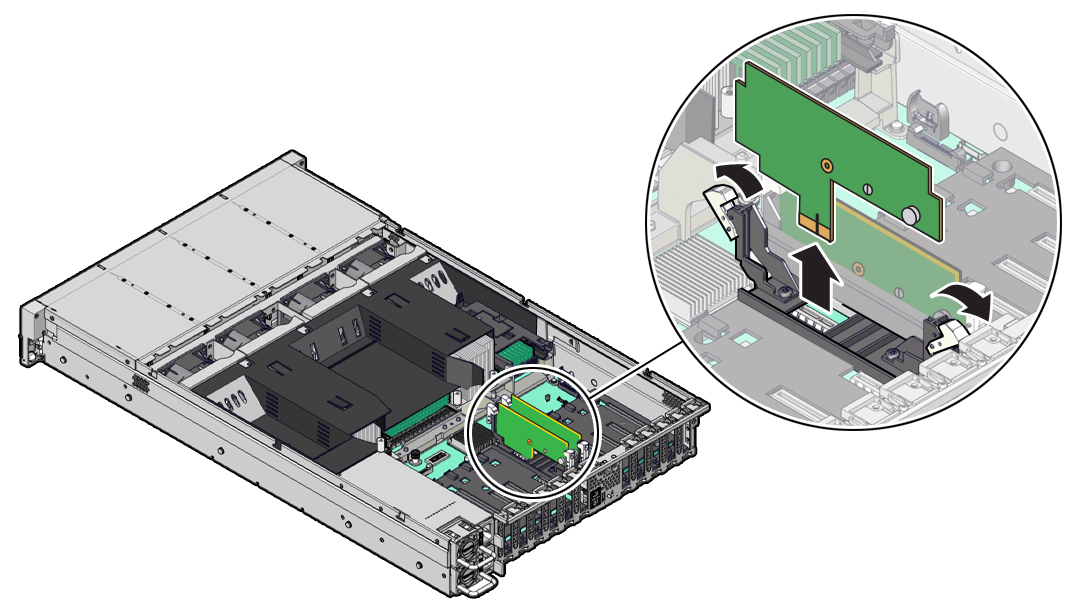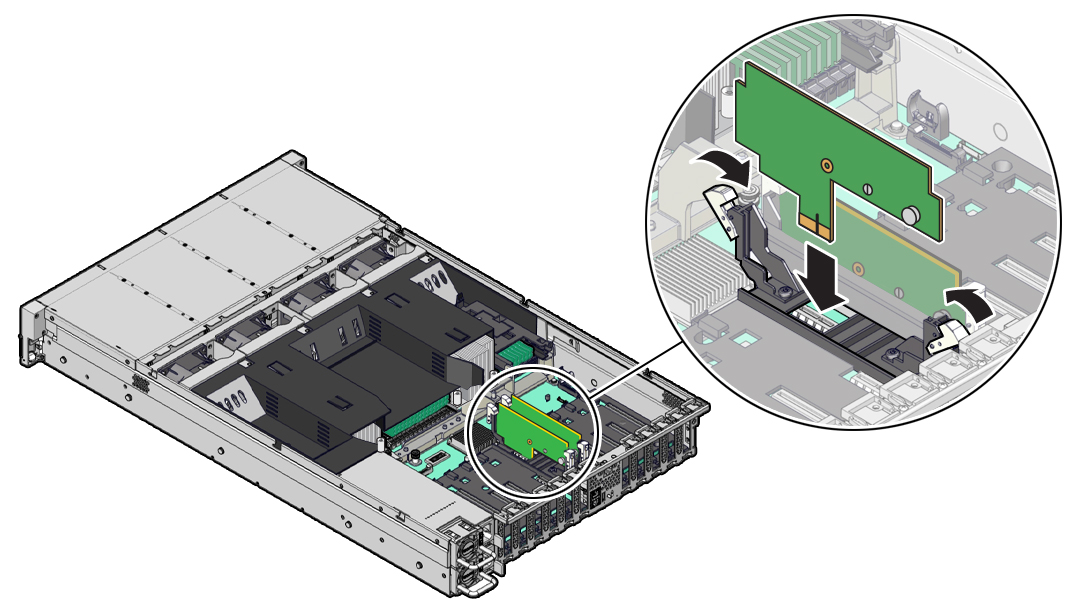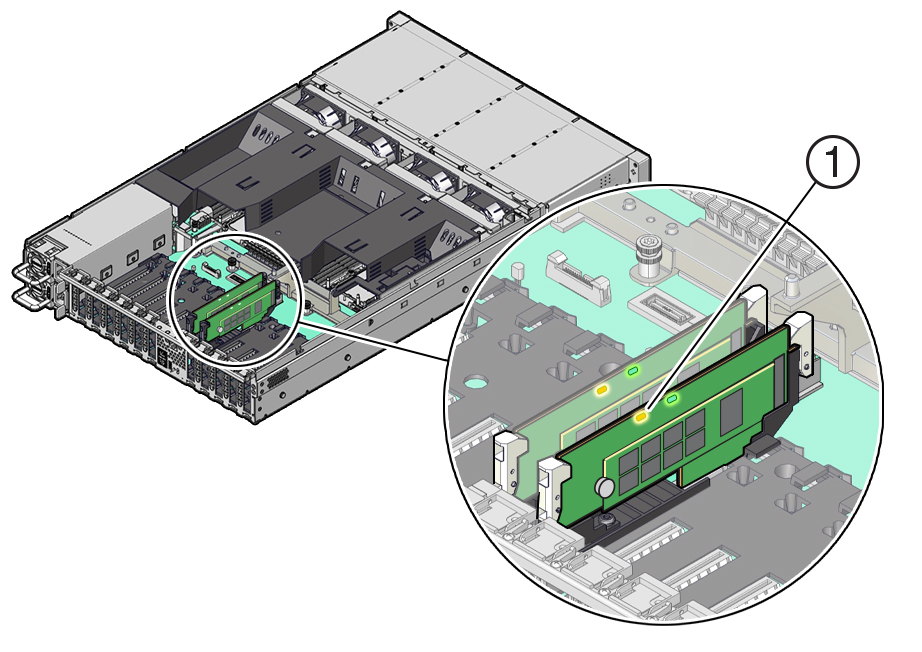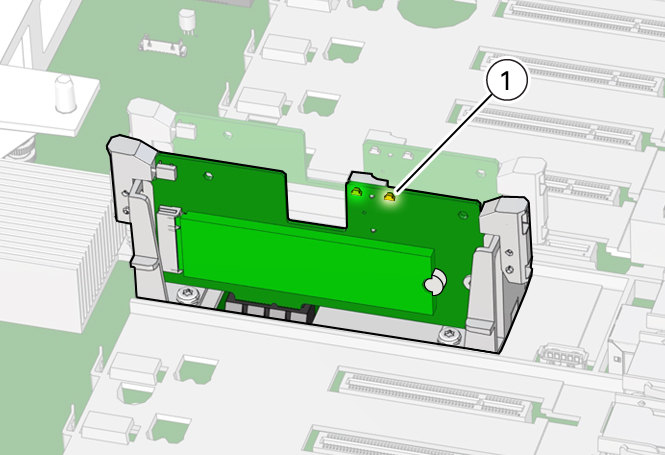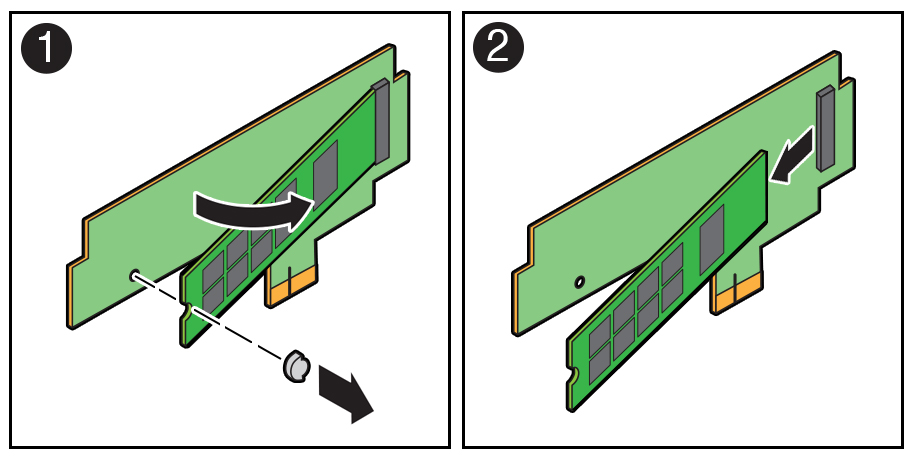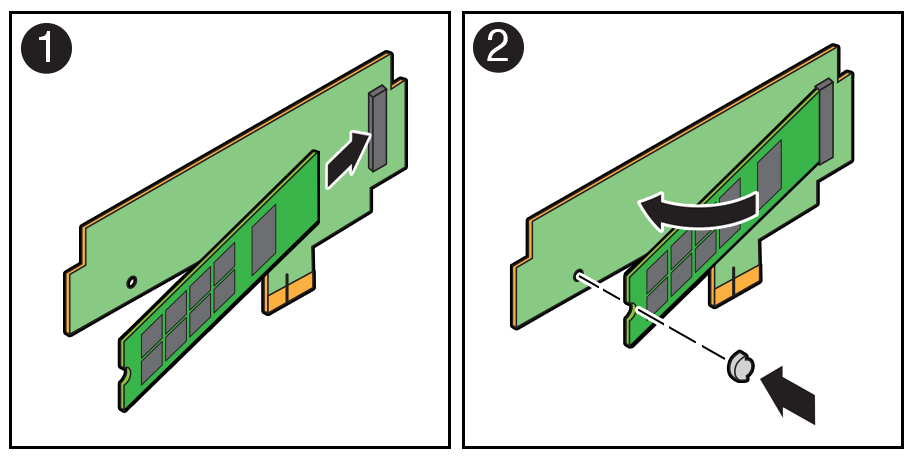7 Servicing the Internal M.2 Flash SSDs (CRU)
This section describes how to service M.2 flash solid-state drives (SSDs). M.2 flash SSDs are customer-replaceable units (CRUs) that do not require you to power off the server. For more information about CRUs, see Illustrated Parts Breakdown and Customer-Replaceable Units.
Caution:
These procedures require that you handle components that are sensitive to electrostatic discharge. This sensitivity can cause the component to fail. To avoid damage, ensure that you follow antistatic practices as described in Electrostatic Discharge Safety.Caution:
Unless the two M.2 risers are running in a software RAID configuration, removing one might result in a system crash and possible data corruption.This section covers the following procedures:
Remove a Flash Riser Board
The server can contain up to two hot-pluggable flash riser boards. Each flash riser board can contain either one or two M.2 flash SSDs.
-
Prepare the server for service.
-
To remove the flash riser board, do the following:
Install a Flash Riser Board
The system motherboard provides two slots (labeled SSDR 0 and SSDR 1) for flash riser boards. When installing flash riser boards, install the first riser board into slot SSDR 0 and then into SSDR 1.
Identify and Remove an M.2 Flash SSD
In the standard Oracle Server X9-2L configuration, the flash riser board contains an M.2 flash SSD in socket SSD.
